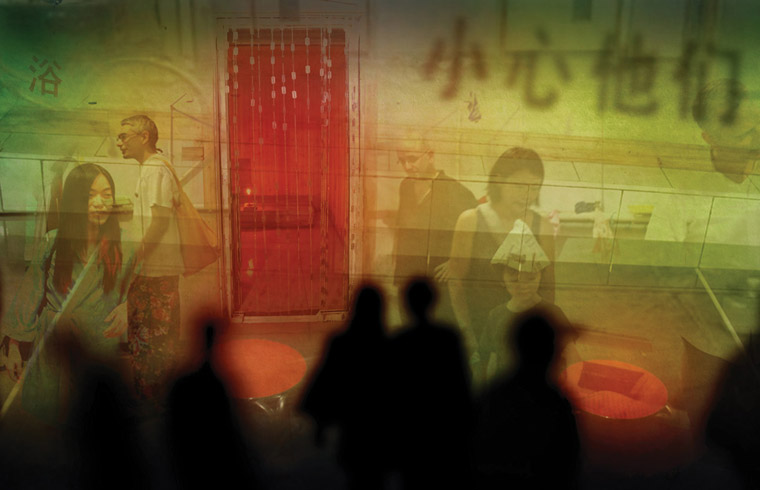SOME THINGS AN ARTIST CAN DO
| February 15, 2011 | Post In LEAP 7

This past year has seen the consolidation of a number of strategies for adapting to the at times paradoxical but always parallel challenges of survival and production, many of which would be unrecognizable or even barred from the institutionalized cosmopolitan alternative systems by which they are often inspired. Take MadeIn Space, a reincarnation of Shanghai’s storied BizArt project that is now a component of the corporate practice of MadeIn, the shell company that produces work for artist Xu Zhen. Although it maintains a left-of-center position, the organization no longer abides by the strict non-profit-generating guidelines of its former self. Indeed, the more artists and art workers embrace such alternative functions, the less interested in institutional structures they become; at this moment, it appears that Hong Kong remains the lone bastion of small-scale independent non-profit spaces in the form of Para/Site Art Space and 1a Space.
In terms of artists who could reasonably be called a part of any alternative scene, the majority of those eligible for commercial representation (ethnically Chinese, typically resident in a major city, and willing to produce objects of some kind) tend to circulate in galleries known for a curatorial or artist-centered approach to exhibition programs, namely Beijing Commune, Boers-Li Gallery, Long March Space, Platform China, ShanghART Gallery, and Vitamin Creative Space. While most are now recognized as powerful commercial entities active internationally, increasingly professional management has curtailed any notion of wildly creative tactics of differentiation, conveniently allowing a growing set of artists to avoid the pitfalls of sole representation.
In particular, artists of the generation that includes Yang Fudong, Liu Wei, Jiang Zhi, Qiu Zhijie, Zheng Guogu, and Xu Zhen have managed to put this delicately balanced system to work on their behalf, inverting relationships that can be torturous for less experienced artists. Their younger colleagues, significantly more open to alternative strategies from the outset, have taken to accepting the necessity of the gallery model while speaking realistically about how it actually affects their work: even as their studio production cycles begin to fall into the rhythm of art fairs instead of primary gallery solo shows, artists from Chu Yun to Liang Yuanwei are exploring alternate exhibition possibilities in institutions and other commercial spaces. Other organizations and ad hoc groups presenting public exhibitions refuse to focus on models of funding and vetting, preferring to view their projects as extensions of individual artistic and curatorial practices, as with Observation Society, Homeshop, SHIFT, Arrow Factory, Forget Art, Manufactura’s Studio, and the Donkey Institute of Contemporary Art. In many cases, these monikers mark an inertia of self-publicity more than self-organization.
Further strategies beginning to make inroads, introduced by visiting artists and those educated abroad (if not yet accepted universally throughout the portions of the Chinese art world with its two dominant art schools) include grant funding and international residencies. Both are supported locally by organizations like Arthub Asia and the Mommy Foundation, but few artists based within China are able to get by on institutional commissions and foundation sponsorships alone; such attempts may nevertheless begin to gain ground at an accelerated pace as alternative spaces and collective projects are increasingly invaded by cultural workers with experience in the mechanics of this parallel system. Opportunities to bridge the commercial and the critical are likewise well-received, as with the Beijing section of the Artist Pension Trust that holds work from a number of remarkable and considerably undervalued artists from across greater China.
Finally and perhaps most notably, the bothersome stigma attached to artists with careers outside the studio has begun to fade. Although there has been a certain aura of romance surrounding the idea of the artist-as-outsider as cultivated in the image of an aloof humanist intellectual in the 1980s, the past several years have seen a willingness to rely on educational and curatorial work to support a lifestyle of cultural production. The schools, for their part, have reached out to encompass more and more leading artists; Yang Fudong’s appointment at the China Academy is a prime example. While further, a range of players from Su Wenxiang to Zhou Tiehai have accepted significant positions at art spaces and museums. The central question, of course, remains that of striking a balance between the production of critical work and the pragmatic necessity of supporting that work within a fundamentally skewed and necessarily imperfect system. Each new possibility that arises— and there have been many over the past year— allows for slight but significant changes in the forms of artistic practice, an open dialectical process that presents a fascinating case for research into the evolution of contemporary culture.


